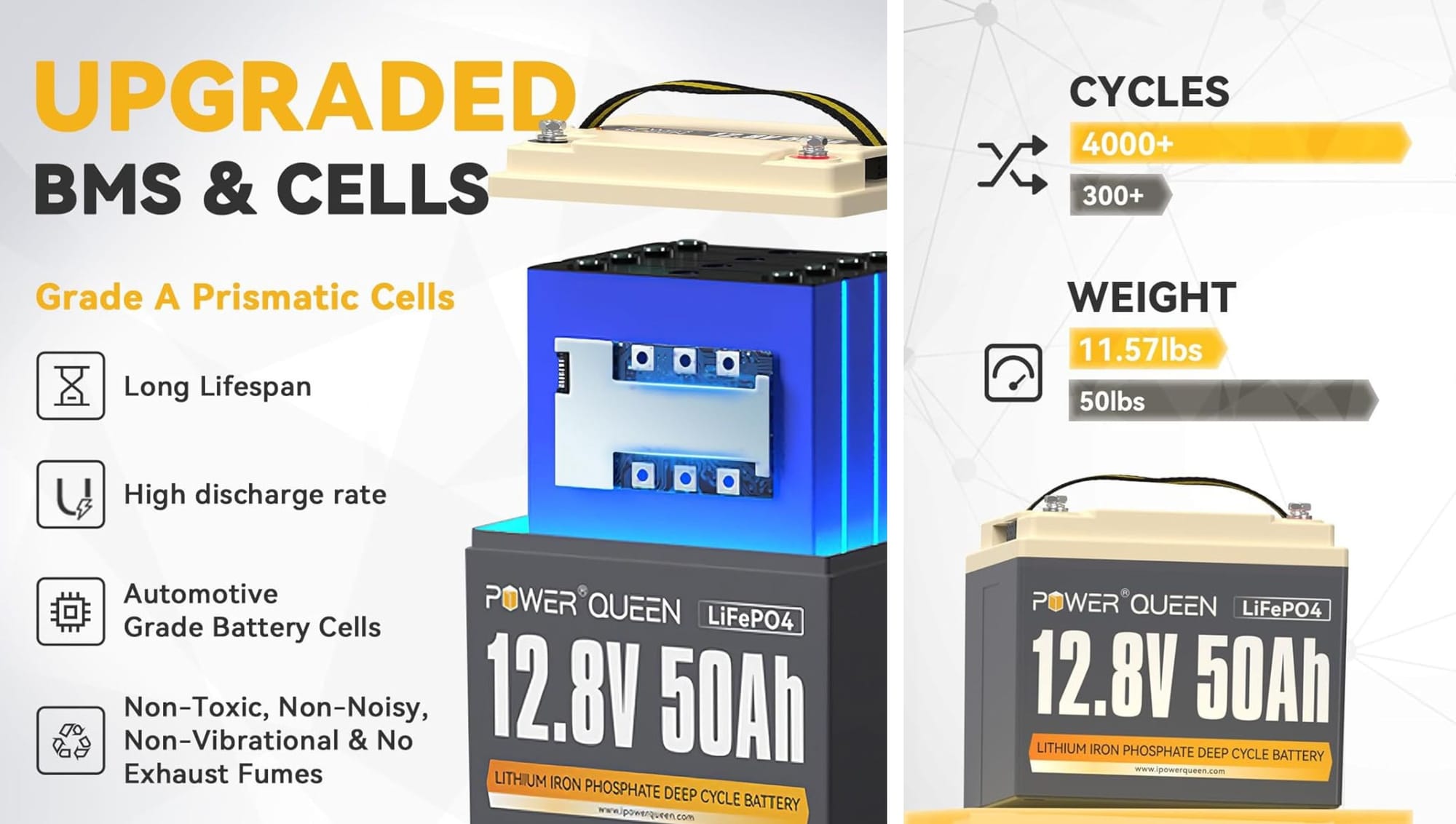Are LFP Batteries Safe? An In-Depth Look
Their stable chemistry ensures that they remain safe even under extreme conditions.

Key Takeaways:
- LFP batteries offer a safer alternative to traditional lithium-ion batteries.
- They have a lower risk of thermal runaway and are more stable at high temperatures.
- LFP batteries are increasingly being used in electric vehicles and renewable energy storage.
Introduction to LFP Batteries
LFP batteries, or Lithium Iron Phosphate batteries, have been making waves in the energy storage sector. Known for their stability and safety, these batteries are becoming a popular choice for various applications, from electric vehicles to renewable energy storage systems. But are they truly safe? Let's dive into the details.
What Are LFP Batteries?
LFP batteries are a type of lithium-ion battery that uses lithium iron phosphate as the cathode material. This composition offers several advantages over traditional lithium-ion batteries, including improved safety and longer lifespan. Unlike other lithium-ion batteries, LFP batteries are less prone to overheating and thermal runaway, making them a safer option for many applications.
The Chemistry Behind LFP Batteries
The unique chemistry of LFP batteries is what sets them apart. The use of iron phosphate in the cathode material provides a stable structure that can withstand high temperatures without decomposing. This stability reduces the risk of thermal runaway, a dangerous condition where the battery overheats and potentially catches fire. Additionally, LFP batteries have a lower energy density compared to other lithium-ion batteries, which further enhances their safety profile.
Safety Features of LFP Batteries
One of the primary reasons LFP batteries are considered safe is their inherent thermal stability. Unlike other lithium-ion batteries that can become unstable at high temperatures, LFP batteries maintain their integrity even under extreme conditions. This makes them an ideal choice for applications where safety is a top priority, such as electric vehicles and large-scale energy storage systems.
Lower Risk of Thermal Runaway
Thermal runaway is a significant concern with traditional lithium-ion batteries. This phenomenon occurs when the battery's temperature rises uncontrollably, leading to a potential fire or explosion. LFP batteries, however, have a much lower risk of thermal runaway due to their stable chemical composition. This makes them a safer alternative for applications that require high levels of safety and reliability.
Stability at High Temperatures
Another key safety feature of LFP batteries is their ability to remain stable at high temperatures. Traditional lithium-ion batteries can become unstable and even dangerous when exposed to high temperatures. In contrast, LFP batteries can withstand higher temperatures without compromising their performance or safety. This makes them an excellent choice for applications in hot climates or environments where temperature control is challenging.
Applications of LFP Batteries
LFP batteries are increasingly being used in a variety of applications due to their safety and reliability. One of the most notable uses is in electric vehicles (EVs). The automotive industry is constantly seeking safer and more efficient battery technologies, and LFP batteries fit the bill perfectly. Their stability and long lifespan make them an ideal choice for powering electric cars.
Use in Electric Vehicles
Electric vehicles require batteries that are not only efficient but also safe. LFP batteries offer both of these qualities, making them a popular choice for EV manufacturers. Companies like Tesla have already started incorporating LFP batteries into their vehicles, citing their improved safety and longevity. This shift towards LFP batteries is expected to continue as more automakers recognize their benefits.
Renewable Energy Storage
Another significant application of LFP batteries is in renewable energy storage. As the world moves towards cleaner energy sources, the need for reliable and safe energy storage solutions becomes increasingly important. LFP batteries are well-suited for this role due to their stability and long cycle life. They can store energy generated from renewable sources like solar and wind, providing a reliable backup during periods of low generation.
Advantages Over Traditional Lithium-Ion Batteries
LFP batteries offer several advantages over traditional lithium-ion batteries. One of the most significant benefits is their improved safety. The stable chemical composition of LFP batteries reduces the risk of thermal runaway and makes them less likely to catch fire. Additionally, LFP batteries have a longer lifespan, which means they can be used for more extended periods without needing replacement.
Longer Lifespan
The longevity of LFP batteries is another key advantage. Traditional lithium-ion batteries tend to degrade over time, losing their capacity and efficiency. In contrast, LFP batteries have a much longer lifespan, retaining their performance even after many charge and discharge cycles. This makes them a cost-effective option for applications that require long-term reliability.
Environmental Impact
The environmental impact of battery technologies is an important consideration. LFP batteries are more environmentally friendly compared to traditional lithium-ion batteries. The use of iron phosphate, a more abundant and less toxic material, reduces the environmental footprint of LFP batteries. Additionally, their longer lifespan means fewer batteries need to be produced and disposed of, further minimizing their environmental impact.
Recycling and Disposal
Recycling and disposal of batteries are critical issues in the energy storage industry. LFP batteries are easier to recycle compared to other lithium-ion batteries due to their simpler chemical composition. This makes them a more sustainable option, as they can be more efficiently recycled and repurposed. Proper disposal of LFP batteries also poses fewer environmental risks, making them a safer choice for long-term use.
Cost Considerations
While LFP batteries offer numerous advantages, cost is always a factor to consider. Historically, LFP batteries have been more expensive to produce than traditional lithium-ion batteries. However, advancements in manufacturing processes and increased demand are driving down costs. As a result, LFP batteries are becoming more cost-competitive, making them an attractive option for various applications.
Future Prospects
The future looks bright for LFP batteries. With ongoing research and development, the performance and cost-efficiency of these batteries are expected to improve further. As more industries recognize the benefits of LFP batteries, their adoption is likely to increase. This will drive innovation and lead to even safer and more efficient energy storage solutions.
Case Study: Tesla's Adoption of LFP Batteries
Tesla, a leader in electric vehicle technology, has recently started incorporating LFP batteries into its vehicles. This move highlights the growing recognition of the safety and reliability of LFP batteries. Tesla's decision to use LFP batteries in its Model 3 vehicles for the Chinese market is a testament to their confidence in this technology. The company cites the improved safety and longevity of LFP batteries as key reasons for this shift.
Real-World Performance
The real-world performance of LFP batteries in Tesla's vehicles has been promising. Users report fewer issues related to overheating and battery degradation, which are common concerns with traditional lithium-ion batteries. This positive feedback underscores the potential of LFP batteries to revolutionize the electric vehicle industry by providing a safer and more reliable energy storage solution.
Challenges and Limitations
Despite their many advantages, LFP batteries are not without challenges. One of the primary limitations is their lower energy density compared to other lithium-ion batteries. This means that LFP batteries are bulkier and heavier, which can be a drawback for certain applications. However, ongoing research aims to address this issue and improve the energy density of LFP batteries.
Addressing Energy Density
Researchers are actively working on ways to enhance the energy density of LFP batteries. Innovations in materials science and battery design are expected to yield significant improvements in this area. As these advancements come to fruition, LFP batteries will become even more competitive with traditional lithium-ion batteries, offering a safer and more efficient energy storage solution.
Conclusion
LFP batteries are a safe and reliable alternative to traditional lithium-ion batteries. Their stability, lower risk of thermal runaway, and longer lifespan make them an ideal choice for various applications, from electric vehicles to renewable energy storage. As technology continues to advance, the adoption of LFP batteries is expected to grow, driving innovation and improving safety in the energy storage industry.
Summary
LFP batteries offer a safer and more stable alternative to traditional lithium-ion batteries. Their unique chemical composition reduces the risk of thermal runaway and allows them to remain stable at high temperatures. These features make LFP batteries an ideal choice for applications that require high levels of safety and reliability, such as electric vehicles and renewable energy storage.
As technology advances, the adoption of LFP batteries is set to rise, spurring innovation and enhancing safety in the energy storage industry. When you're ready, click the button below to explore the LFP batteries we've selected for you on Amazon, and join the growing community committed to safe energy storage.

